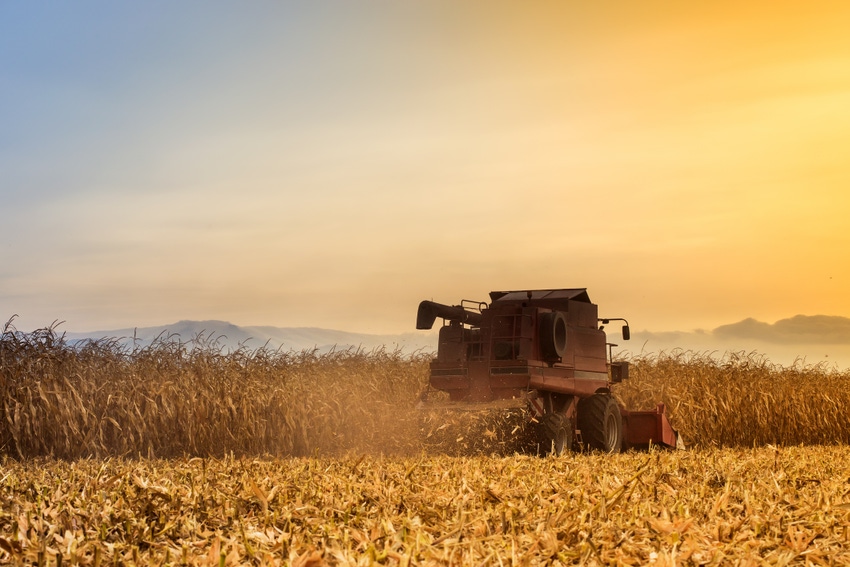
The May WASDE report provided us fresh insight into what USDA was estimating for the 2021/2022 marketing season. The report summarized the interesting position we find ourselves in, which is that even with a large crop this season, any increase in ending stocks should be modest.
Put another way, unless we have a bumper crop, ending stocks continue to remain tight throughout next year.
This was most evident in soybean inventories coming in at 140 million bushels based on an average yield of 50.8 bpa. This is compared to 120-million-bushel carryover from the 2020/2021 season. Any slight hiccup from weather and soybean inventories quickly drop back to pipeline supplies. If we were to produce another record yield of 51.9 bpa as back in 2016, the carryover reaches roughly 235 million bushels. A healthy increase from current levels, but a long way from being burdensome.
The party is not over
Looking at corn, the USDA is looking for ending stocks of 1.507 billion bushels next season while they peg current ending stocks at 1.257 billion bushels. At first glance, this could indicate that the party is over for the major bull rally we have experienced. However, strengthening basis levels would indicate that these ending stocks are either not out there or they are in very tight hands. It is up to the end-user now to convince those with any old crop left that they should part with it.
A market correction like the one we are experiencing will probably be more successful than basis improvements at getting farmers to part ways with their grain. If prices rebound, they will be much less inclined to want to ride down another market meltdown again, this time targeting sales at recent highs.
While USDA increased the 21/22 ending stocks by 250 million, keep in mind that it was around this time last year we thought we were going to see 3-billion-bushel surplus. Some even estimated that a 4-billion-bushel surplus was a possibility. These numbers are still pie in the sky at this point.
USDA also used what would be a record of 179.5 bpa yield to meet that 1.5 billion bushel ending stocks for next season. That seems a bit presumptuous considering the extreme dry weather in parts of the North Corn Belt. Across the country, only 63% of subsoils are rated "adequate to surplus" vs. 84% last year this time. Further, 37% of subsoils are rated "short" to "very short" vs. just 16% last year. It will take more than a few days of showers to change that subsoil moisture picture.
If the average corn yield matches last season’s 172 bpa, our ending stocks could easily drop down below 1 billion bushel providing ample staying power for the corn market.
Brazil’s woes
In Brazil, their second crop of corn continues to collapse. I keep reading how the Brazilian drought is hurting the safrinha corn production forecast. Just to be clear, what is happening is not a drought. A drought would imply that there is a lack of rainfall when we otherwise would expect it. What is happening now happens every year as the rainy season dissipates and they enter a very distinct dry season. Rainfall begins to taper off in April and you usually get very little in May. June, July, and August are bone dry. September may slowly begin to see some precipitation begin again, but it won’t pick up until October/November.
Translation? The second crop just didn’t get in early enough and the dry season has arrived on schedule.
We continue to be optimistic that July corn will test or exceed the May corn price despite the market setback based on weather events and lack of supply. The near-term outlook has not changed. Planting progress may be moving at breakneck speeds but that is because it is still so dry in a lot of areas.
Matthew Kruse is President of Commstock Investments. He can be reached at [email protected] or 712-227-1110.
Futures trading involves risk. The risk of loss in trading futures and/or options is substantial and each investor and/or trader must consider whether this is a suitable investment. Past performance is not indicative of future results. Trading advice is based on information taken from trades and statistical services and other sources that CommStock Investments believes to be reliable. We do not guarantee that such information is accurate or complete and it should not be relied upon as such. Trading advice reflects our good faith judgment at a specific time and is subject to change without notice. There is no guarantee that the advice we give will result in profitable trades.
The opinions of the author are not necessarily those of Farm Futures or Farm Progress.
About the Author(s)
You May Also Like






